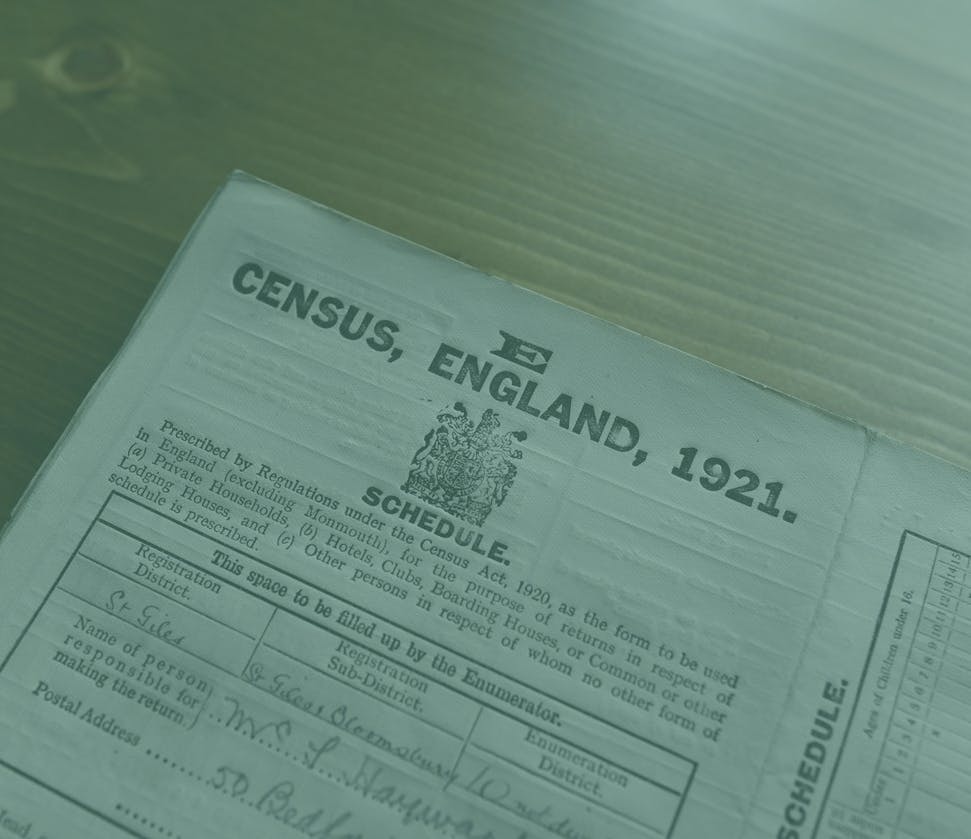The difference between Anderson and Morrison air raid shelters during the Second World War
3-4 minute read
By The Findmypast Team | October 7, 2022
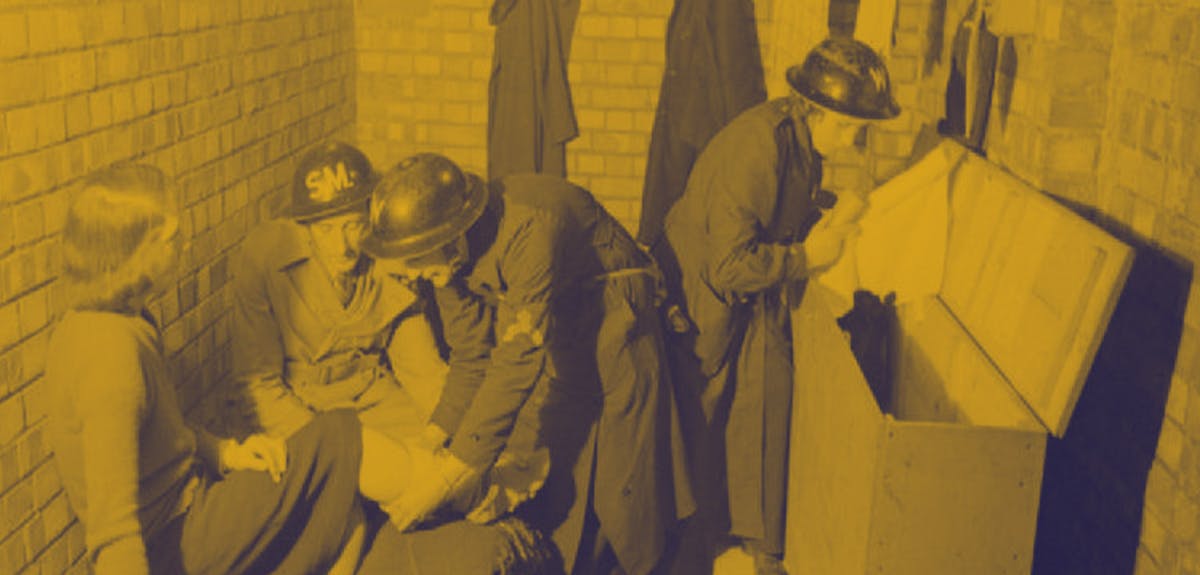
Air raid shelters were commonplace in Britain during the Blitz but do you know what sets the two most common types, Anderson and Morrison, apart?
In 1938, the members of the League of Nations agreed unanimously that, in the event of a general war, they would not bomb civilians. In the same year, the government began investing heavily in air raid precautions and considering shelter designs, just in case the agreement signed did not hold under the pressure of a total war with Germany. Just two years later, Britain was subjected to continuous nightly bombing raids by the Luftwaffe for over a month in a campaign known as the Blitz.
Being out and about during a bombing raid could be a dangerous affair. The government advised civilians to take cover as soon as possible after hearing the warnings and several types of official and unofficial air raid shelters were provided for public use. The two most commonly used hideouts were Anderson and Morrison shelters.
Anderson air raid shelters
By far the most common 'private' shelters, Anderson shelters were designed to be put up at the bottom of a suburban garden and accommodate up to 6 people. Made up of sheets of corrugated iron, the shelter was designed for easy assembly by the householder. In order to be fully effective, the shelter had to be dug into a 4ft deep pit in the ground, with the soil being heaped on top to provide cover against nearby bomb blasts. Many people planted vegetables on top, making the most of the soil heaped on their makeshift dugouts. Close to 3 million Anderson shelters were erected across Britain during the Second World War.
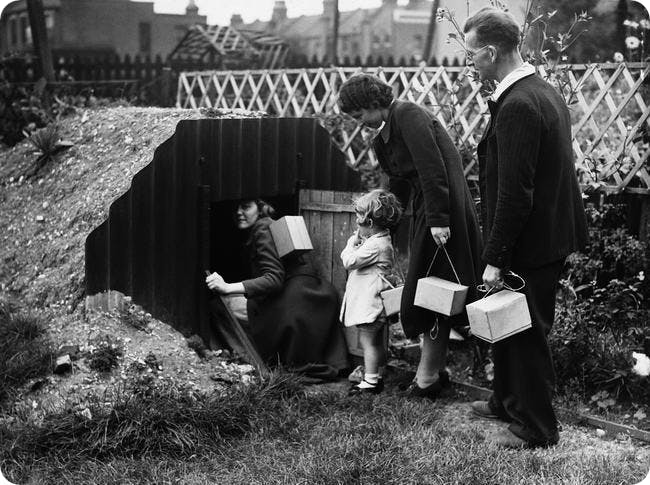
Anderson shelters tended to become waterlogged in winter, making them freezing cold and deeply unpleasant places to be. In response, the government developed a shelter that could be used within the home.
Morrison air raid shelters
The Morrison shelter was effectively a metal cage, in which the occupants would lie until an air raid subsided.
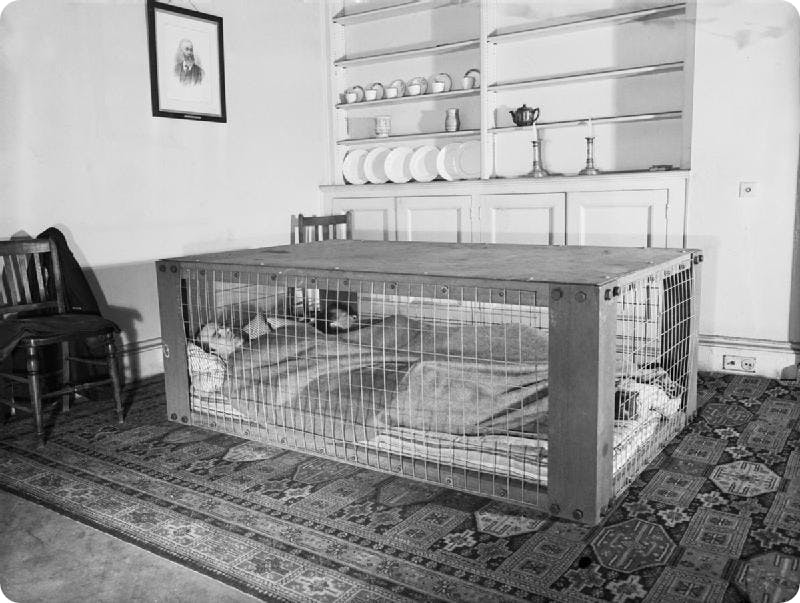
Often doubling as a kitchen table, Morrison shelters were supplied flat-packed for D.I.Y. assembly. That wasn't as easy as it sounds - they had over 300 parts and you'd almost need an engineering degree to put them together correctly. Around 500,000 Morrison shelters were used by the public.
Public air raid shelters
If one was unlucky enough to be out shopping, visiting relatives, or otherwise outside dashing distance of home when a raid was detected, there were always the public shelters in which to stay until the raid passed. A public shelter could range from trenches dug in a local park to brick blockhouses on the corner of the street.
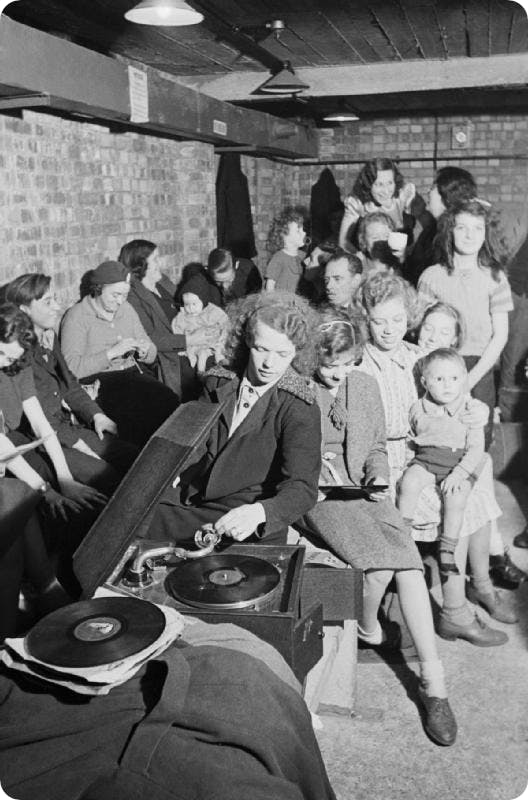
Public air raid shelters could be crowded, uncomfortable and loud. Fortunately, with a little perseverance, fun could be had despite the threat from bombs above. Here, a young woman works a gramophone, putting the needle into place to start a new record.
Public air raid shelters had at best a mixed reputation, with their flimsy construction contributing to the general unease at using them. This was compounded by a series of incidents where badly constructed shelters collapsed in on their unlucky occupants after nearby blasts, leading people to trust more in their own shelters than that of their street.
Most streets in danger zones had some form of public shelter installed.
Taking shelter from the Blitz in London Underground
In defiance of a government ban on the use of the underground as shelter during an air raid, many Londoners took shelter in the Tube network at the height of the Blitz. In fact, the network played host to upwards of 140,000 people on its busiest nights. Stations such as Caledonian Road were often full with people sheltering from the blasts above by early evening. Some sections of the underground were closed entirely for the duration. Aldwych, for example, became a permanent air-raid shelter.
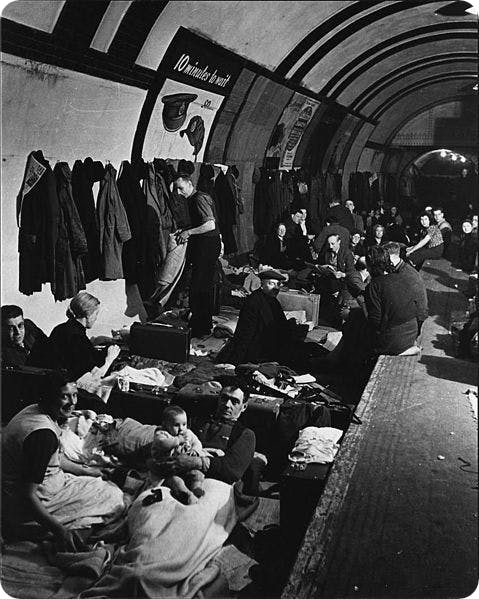
Aldwych Underground Station, along with the rest of the network, was used as a deep shelter by thousands of Londoners every night during the Blitz.
Whether they took cover in an Anderson shelter, a Morrison shelter or a public refuge, your British relatives were undoubtedly affected by the bombing campaigns of the Second World War. Find out more about their lives and communities on the eve of war with the 1939 Register or read more about air raid shelters and the Blitz in newspapers from the time.
Related articles recommended for you
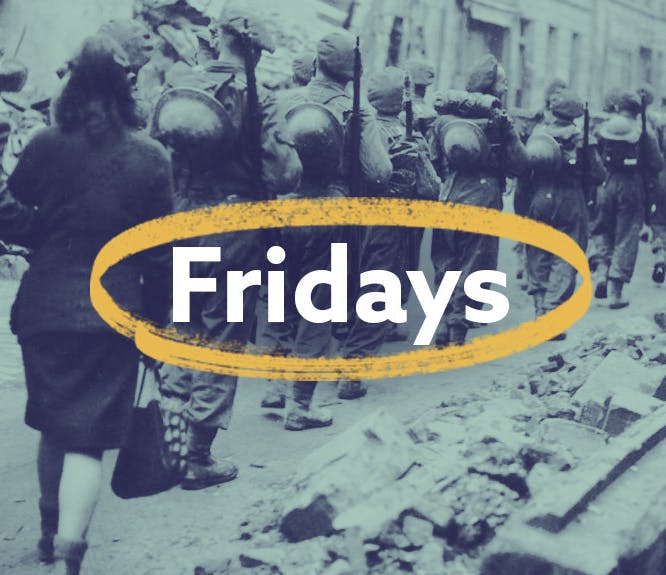
Discover Warwickshire during World War Two
What's New?

Here's how to overcome nine common house history research challenges: our expert's top tips
Help Hub

Labourers and landed gentry: Kate Middleton’s family tree
Discoveries
